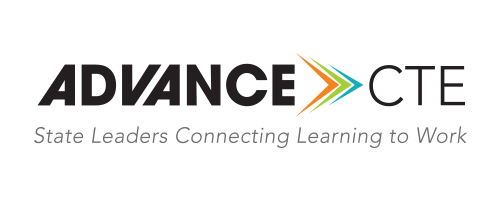Leveraging Membership Seats to Save Time & Grow Capacity w/ Delaware State CTE Director Jon Wickert
As a national nonpartisan membership organization, Advance CTE seeks to empower state members to build and maintain diverse cross-sector state teams. State memberships are flexible and the resources that accompany these seats have the power to save time and capacity while expanding access to resources that create a common dialogue and understanding of how different offices need to coexist in the state Career Technical Education (CTE) ecosystem. State leaders can benefit from maximizing their available seats to include representation from K-12, postsecondary, and workforce development.
In December of 2023, Advance CTE met with Delaware State CTE Director, Jon Wickert, to discuss his approach to leveraging membership seats to push strategic alignment, onboard new staff, and where he hopes to see the greatest impact.

How are you currently using your state membership seats?
All five of Delaware’s seats are assigned. This covers myself, two rotating seats for members of my team, a representative from the community colleges who oversees workforce programs and the CTE Director of the school district with the most CTE programming.
Can you say a little more about how you’re making use of the rotating seats?
In times of stable staffing, the rotating seats would likely be held by whoever is leading our policy work and one of our equity leads. I have two rotating membership seats, and when I’m onboarding a new person, I assign them a membership seat to help them develop a more robust understanding of CTE. This way, they have the chance to attend the convening at a discount, and I can introduce them to the network. I saw the benefit of this as a new hire myself when former State CTE Director Luke Rhine assigned me membership because I needed access to support the projects that I was leading. This allowed me to see the system landscape and identify subject matter experts from other states.
Why do you feel like it is important to prioritize diversity across your membership seats?
Increasing diversity in representation across my state team is important because there are a lot of people new to CTE who are doing this work in offices outside of my agency, many of whom are not intimately familiar with CTE or the research and resources available that support our shared work. A membership seat comes with access to Advance CTE’s suite of resources and professional learning opportunities.
The most valuable resources are the policy office hour emails, the blog round-ups, and the member emails. I’m constantly forwarding these to members of my team. I also appreciate the questions that other State CTE directors post or when they share a bit about the thing they're thinking about. These are topics of interest for my team, and I'm copying and pasting them to say, “Hey guys, we should think about this thing, right?” I think there is a lot of value in members seeing the top conversations states are having.
How could diverse representation across your state membership seats support your work?
Bringing in representatives from the Workforce Board, Labor, and the state Higher Education office would be hugely beneficial because sharing resources would help establish a common language and also help with learning curves for new staff. If we approach assigning seats strategically by holding space for the specific seats/offices we are supposed to work with (Labor, Workforce Board, Higher Education Office), it would be possible to have greater alignment in our work. Right now, we don’t have a common working knowledge to support how we’re coordinating our work. For example, if I need to coordinate with the workforce board, I want them to have access to the same resources and same email distributions. I want them to know about what other states are doing and be able to sit in on the federal policy office hours so they see the CTE side.
Key Takeaways
Jon outlined several benefits of utilizing and diversifying all five member seats for State Directors to consider. Maximizing the flexibility of the membership seats helps to:
-
Provide a proactive approach to mitigating the impact of high turnover in the CTE space.
-
Increase state member knowledge of key CTE policies and practices by providing access to Advance CTE’s suite of resources and tools to streamline onboarding for new staff.
-
Take advantage of member discounts for convenings to include more members of the state CTE team.
-
Increase your state’s capacity to participate in communities of practice, webinars, and other professional development cohort opportunities.
-
Gain support as a new or current state director.
-
Establish a common language across agencies to support systems alignment and collaboration.
For more information about how to maximize or increase your state membership seats, please visit https://careertech.org/get-involved/membership/ or you can contact Dr. Stephanie Perkins, Director of Member Engagement & Professional Learning, at sperkins@careertech.org.
Amy Hodge, Membership and Policy Associate
